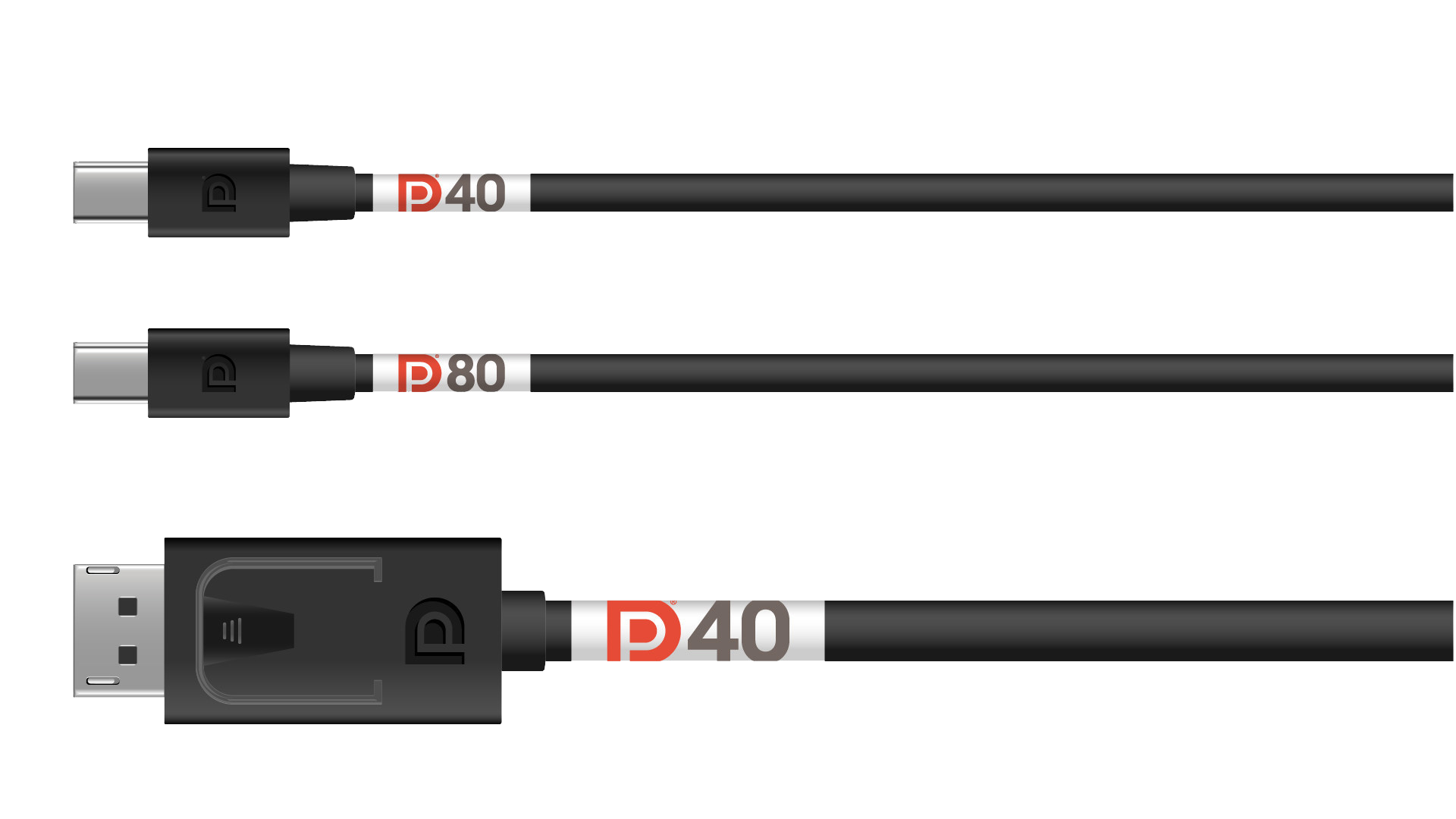DisplayPort 2.0 products already support DisplayPort 2.1
Improved USB 4 compatibility and higher cable standards are among the highlights.

DisplayPort 2.0 has hardly made it into the wild, yet here comes DisplayPort 2.1. Interestingly, VESA, the industry group behind the development of DisplayPort says that all DisplayPort 2.0 certified products already meet the 2.1 spec.
DP 2.1 essentially replaces DP 2.0. The revised spec aims to improve alignment and integration with USB 4 and the type-c connector. It means DisplayPort signals are better able to co-exist with USB data while delivering increased efficiency.
According to Alan Kobayashi, VESA board chair and DisplayPort task group chair, “Display transport through DisplayPort, with its higher bit rates and proven visual quality of DSC compression even for HDR content, offers ample bandwidth for the needs of virtually every practical application.” That sounds good. High resolution gaming at high refresh rates is something all gamers can appreciate.
DisplayPort 2.1 also brings updated cable specifications. A DP40 cable can support 10Gbps UHBR10 (40Gbps with up to four links). Cable lengths beyond two meters should now be possible too. The DP80 cable supports the UHBR20 link rate, with four lanes providing up to 80Gbps of bandwidth. UHBR stands for Ultra-High Bit Rate. DP 1.4a can deliver up to 32.4 Gbps, so the highest 80Gbps of a high spec device is a big improvement.

Best gaming monitor: Pixel-perfect panels for your PC
Best high refresh rate monitor: Screaming quick screens
Best 4K monitor for gaming: When only high-res will do
Best 4K TV for gaming: Big-screen 4K PC gaming
In terms of resolution, DP 2.1 remains unchanged from DP 2.0. A UHBR20 connection can deliver 75Hz at 8K uncompressed, or over 240Hz at 4K. That’s with 10-bit color depth. Though refresh rates will be a little lower for HDR10 content, 8K at 60Hz is still possible. With 8-bit depth, maximum refresh rates are higher and even higher again with Display Stream Compression. A 16K display at 60Hz is possible in that case.
AMD has confirmed that it’s upcoming RDNA 3 graphics cards will support DisplayPort 2.0, so AMD’s cards will have at least one advantage over Nvidia’s RTX 4090 which is limited to DP 1.4a. Intel’s Arc cards support DP 2.0 as well, though only UHBR10 mode. That's still enough for over 180Hz at 4K.
Now that the ecosystem is slowly maturing, we await DP 2.1 monitors to take advantage of all that bandwidth. CES 2023 would be a logical forum for showing off the latest and greatest monitors. A 7680 x 2160 curved ultrawide would be a sight to behold, though I'm not sure I want to look at the price of such a panel!
Keep up to date with the most important stories and the best deals, as picked by the PC Gamer team.

Chris' gaming experiences go back to the mid-nineties when he conned his parents into buying an 'educational PC' that was conveniently overpowered to play Doom and Tie Fighter. He developed a love of extreme overclocking that destroyed his savings despite the cheaper hardware on offer via his job at a PC store. To afford more LN2 he began moonlighting as a reviewer for VR-Zone before jumping the fence to work for MSI Australia. Since then, he's gone back to journalism, enthusiastically reviewing the latest and greatest components for PC & Tech Authority, PC Powerplay and currently Australian Personal Computer magazine and PC Gamer. Chris still puts far too many hours into Borderlands 3, always striving to become a more efficient killer.

